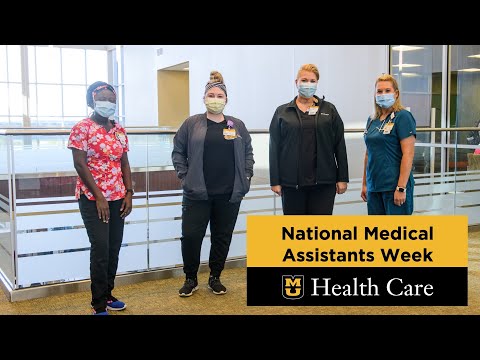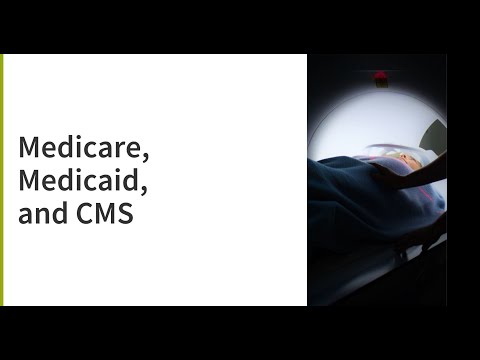What Do I Need to Become a Medical Assistant?
Contents
- So, you want to be a medical assistant?
- The first step: completing an accredited program
- Certification: making yourself more marketable
- The importance of externships and internships
- Landing your first medical assistant job
- What to expect on the job
- The medical assistant salary landscape
- The outlook for medical assistants
- 10 things every medical assistant should know
- 5 popular medical assistant career paths
You’re considering a career in medical assisting, and you’re wondering what you need to do to get started. We’ve got the answers you’re looking for, including information on medical assistant training and certification.
Checkout this video:
So, you want to be a medical assistant?
Medical assistants perform many important administrative and clinical tasks to keep doctors’ offices, clinics, and other healthcare facilities running smoothly. But what does it take to become one?
First and foremost, you must have a high school diploma or equivalent. Some medical assistants have postsecondary education such as a certificate or diploma from an accredited medical assisting program, but it is not required in all states. Many employer-based training programs also exist.
Next, you will need to obtain certification. Certification is not required in all states, but some employers prefer or require it. The American Association of Medical Assistants (AAMA) offers the Certified Medical Assistant (CMA) credential, which is recognized nationwide. To earn the credential, you must pass the CMA Exam administered by the Certifying Board of the AAMA. The exam tests your knowledge of medical assisting concepts and skills.
Once you have your diploma or certificate and certification (if required or desired by your employer), you will be ready to begin your career as a medical assistant!
The first step: completing an accredited program
The first step to become a medical assistant is to complete an accredited program. These programs are typically offered at community colleges, vocational schools, and some universities. The length of the program can vary, but most take between one and two years to complete.
Medical assistant programs generally include both classroom and clinical instruction. Coursework typically covers topics such as anatomy, physiology, Medical Terminology office procedures, and recordkeeping. Clinical instruction gives students the opportunity to gain hands-on experience in a healthcare setting.
After completing an accredited medical assistant program, students must then pass the Certified Medical Assistant (CMA) exam administered by the American Association of Medical Assistants (AAMA). Once certified, medical assistants can begin working in healthcare settings such as doctors’ offices, clinics, and hospitals.
Certification: making yourself more marketable
One way to make yourself more marketable as a medical assistant is to become certified. Certification is not required in all states, but it may be beneficial in terms of job advancement and earning potential. There are multiple certification exams available, and the one you choose will likely depend on the state in which you work as well as your employer’s preference. The most common certification exams for medical assistants are offered by the American Association of Medical Assistants (AAMA), the National Healthcare Association (NHA), and the National Center for Competency Testing (NCCT).
The importance of externships and internships
While in school, medical assistant students have the opportunity to participate in externships and internships. These are important opportunities to gain real-world experience in the field and learn from experienced professionals. Many employers prefer to hire candidates who have completed an externship or internship, so these programs can give you a competitive edge when you’re job hunting.
Landing your first medical assistant job
You’ve probably seen medical assistants in hospitals, clinics, and doctor’s offices. They’re the ones who take your blood pressure, weights, and temperatures; they might also give you injections or take X-rays.
A career as a medical assistant can be a great way to start your healthcare journey. Medical assistants are in demand, and the job outlook is good. According to the Bureau of Labor Statistics, employment of medical assistants is projected to grow 19 percent from 2019 to 2029, much faster than the average for all occupations.
If you’re thinking about becoming a medical assistant, here are a few things you should know:
Education requirements: Most medical assistants have completed a postsecondary education program comprising either an associate’s degree or certificate. Some states have certification requirements for medical assistants. In addition, certain employers may prefer to hire candidates who have completed a formal education program.
Job duties: Medical assistants perform both clinical and administrative duties. Their responsibilities vary depending on the size and location of the practice, as well as state regulations. However, common job duties include taking and recording patients’ vital signs; preparing patients for examination; answering patients’ questions; scheduling appointments; updating patient medical records handling correspondence; billing and coding insurance forms; handling patient accounts and payment posting; stocking supplies; handling telephone calls; transcribing physicians’ orders; preparing laboratory specimens for testing by laboratory personnel; performing basic laboratory tests on site (such as pregnancy tests); conducting outreach programs (such as blood drives); arranging hospital admissions and laboratory services…and more! The best way to learn about job duties is to shadow or work with a medical assistant in the type of practice that interests you.
Work environment: Medical assistants work in doctor’s offices, clinics, hospitals, outpatient care centers, and other healthcare facilities. They usually work full time during regular business hours. However, some medical assistants may work evenings or weekends to cover shifts left vacant by other staff members who are on vacation or sick leave. In addition, some medical assistants may be required to work overtime on occasion to cover for absent colleagues or meet deadlines.
What to expect on the job
Medical assistants are vital members of the healthcare team. They are responsible for performing a variety of clinical and administrative tasks to support the work of physicians and other medical professionals. If you’re thinking about becoming a medical assistant, you’re probably wondering what the job is really like. Here’s a look at some of the things you can expect to do on the job.
Clinical tasks:
Medical assistants are responsible for a variety of clinical tasks, including taking medical histories and recording vital signs, preparing patients for examinations, assisting with procedures, collecting and processing lab specimens, and teaching patients about their health conditions.
Administrative tasks:
Medical assistants also perform a variety of administrative tasks, such as scheduling appointments, maintaining Medical records billing and coding insurance forms, and handling correspondence.
In addition to these specific tasks, medical assistants may also be responsible for other general office duties, such as answering phones, greeting patients, and stocking supplies.
The medical assistant salary landscape
Medical assistants are in high demand and the job outlook is excellent. According to the Bureau of Labor Statistics, employment of medical assistants is expected to grow by 29 percent from 2016 to 2026 — much faster than the average for all occupations.1
With such high demand, it’s no surprise that medical assistant salaries are on the rise. In May 2017, medical assistants earned a median annual salary of $31,540.2 And, according to the2017 Medical Assistant Salary Guide from AAPA, the median expected salary for new graduates was $33,000.3
With such promising numbers, now is an excellent time to start your career as a medical assistant. But what do you need to get started? Read on to find out.
The outlook for medical assistants
The Bureau of Labor Statistics projects that employment of medical assistants will grow much faster than the average for all occupations from 2016 to 2026. The increasing use of physician assistants to perform routine tasks, such as taking medical histories and giving immunizations, will increase the demand for clinical and administrative tasks to be performed by medical assistants.
The median annual salary for medical assistants was $32,480 in 2017. The top 10 percent of those earning in this profession made more than $45,760 per year, while the lowest paid 10 percent earned less than $23,860 annually. Most medical assistants worked in physicians’ offices (including outpatient care centers) or hospitals; a small number were employed in dental offices or other health care facilities, such as nursing homes and outpatient mental health centers.
10 things every medical assistant should know
Whether you are just starting out in your medical assistant career or you have been working in the field for awhile, there are certain things that you should know in order to be successful. Below is a list of 10 things every medical assistant should know:
1. Medical assistants need to have excellent people skills. You will be interacting with patients on a daily basis and need to be able to put them at ease.
2. You need to be able to handle multiple tasks at one time and stay organized.
3. You will be responsible for a lot of paperwork so you need to have good attention to detail.
4. Medical assistants need to have good communication skills. You will be communicating with patients, doctors, and other health care professionals on a daily basis.
5. You need to have basic computer skills. Most medical offices are now using electronic medical records so you will need to be able to input data and retrieve information from the computer system.
6. You will be responsible for taking patients’ vital signs so you need to know how to properly take blood pressure, temperature, pulse, and respiratory rate.
7. Medical assistants need to know how to properly administer injections and perform basic lab tests such as blood glucose testing and urinalysis.
8. You will be responsible for scheduling appointments and maintaining patient records so good customer service and office management skills are essential.
9. Many medical assistants also perform basic clerical duties such as answering phones and filing paperwork so strong administrative skills are also important.
10
5 popular medical assistant career paths
There are many possible career paths for medical assistants. Some work in primary care, while others specialize in areas like orthopedics or cardiology. Here are five of the most popular medical assistant career paths:
1. General medicine: Medical assistants in general medicine work in primary care offices and provide basic patient care. They may take vital signs, give injections, prepare patients for examinations, and assist with office procedures.
2. Pediatrics: Medical assistants who specialize in pediatrics work in pediatricians’ offices and provide care specifically for children. They may have additional training in child development and behavior, and they may also be responsible for scheduling well-child visits and immunizations.
3. Orthopedics: Medical assistants who specialize in orthopedics work in orthopedic surgeons’ offices and assist with the diagnosis and treatment of musculoskeletal disorders. They may help prepare patients for surgery, set up traction equipment, apply casts, and assist with office procedures.
4. Cardiology: Medical assistants who specialize in cardiology work in cardiovascular clinics or cardiologists’ offices and assist with the diagnosis and treatment of heart disorders. They may take electrocardiograms (EKGs), perform stress tests, monitor patients’ vital signs, and provide patient education on heart-healthy lifestyles.
5. OB/GYN: Medical assistants who specialize in obstetrics/gynecology (OB/GYN) work in OB/GYN practices and provide care specifically for women throughout their reproductive years. They may take pelvic exams, give Pap smears, administer pregnancy tests, and provide patient education on contraception and other women’s health issues.







